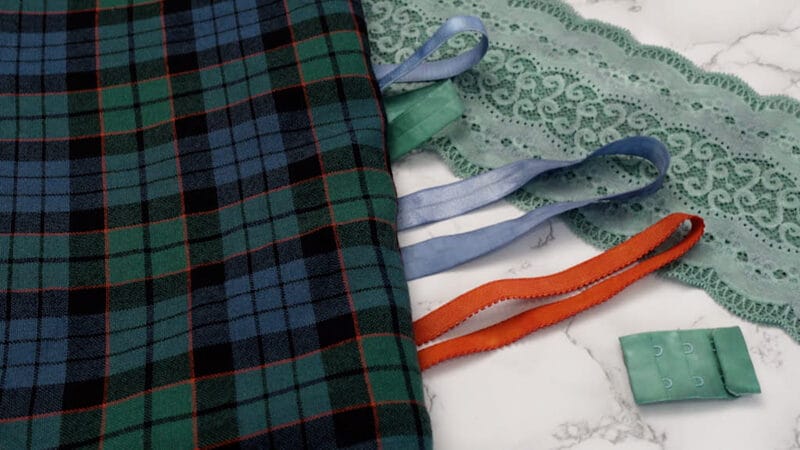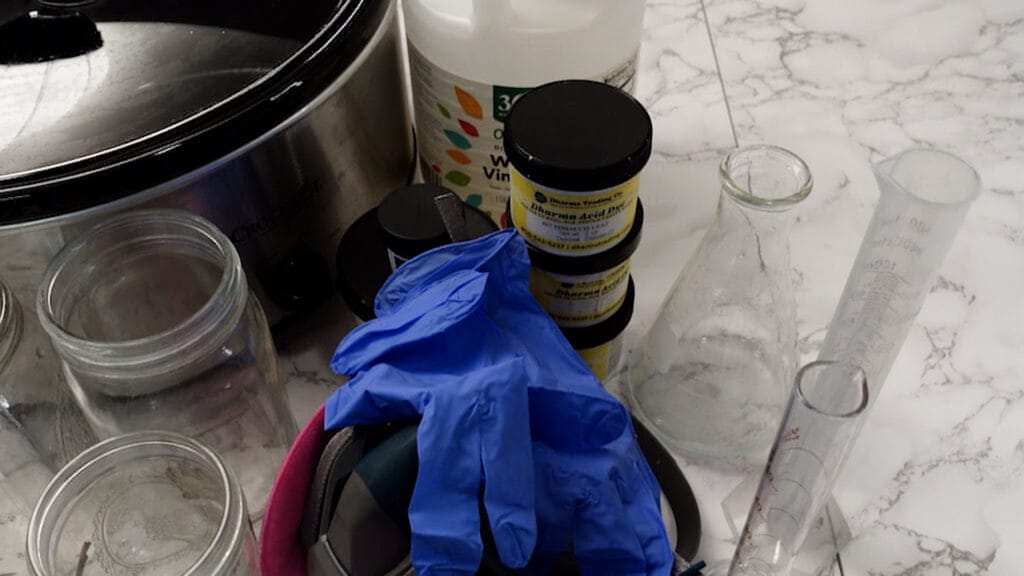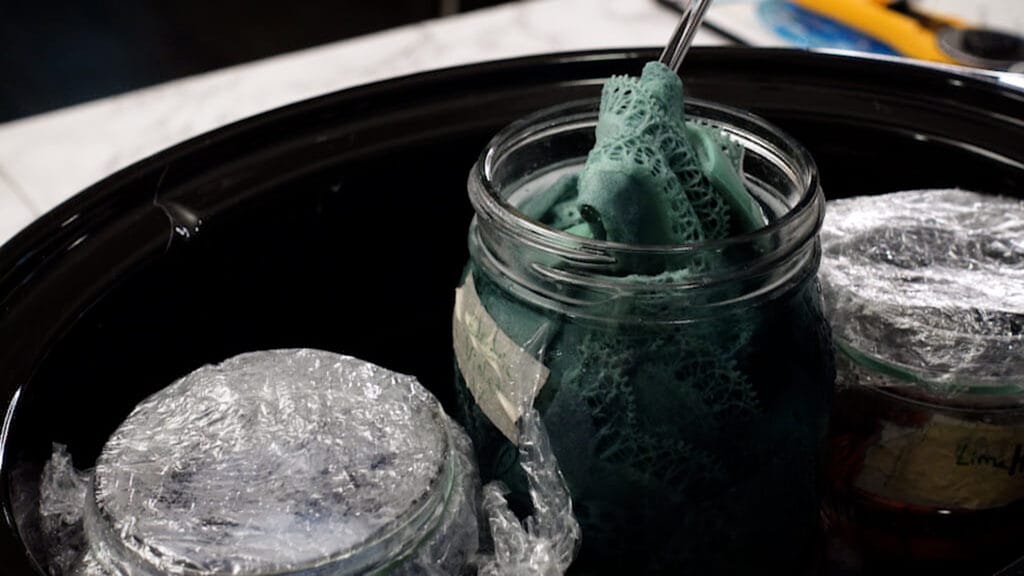Using Acid Dyes – Recipes for Custom Colors
One of the biggest issues I have with acid dyes, is the pre-made color selection. Don’t get me wrong, there’s a huge range, but the colors are never quite what I want.

One of the biggest issues I have with acid dyes, is the pre-made color selection. Don’t get me wrong, there’s a huge range, but the colors are never quite what I want. Some people solve this by mixing custom colors starting with primary colors, however, I prefer to use a color that’s close and mix a second or third color in to get the perfect shade.
I’m not going to cover the dyeing steps in this post because I have a companion YouTube video, that covers everything you need to know. Instead, I’m going to share my custom color recipes I used in that video as well as how you can mix your own.

How to Create Custom Dye Recipes
To get started, all my recipes begin with 1% DOS (depth of shade) and 1% dye concentration and adjust from there. DOS is how much dye liquid is added to the acid solution and dye concentration is how much powder is added to create the initial dye liquid. I use a scale and weigh boats to measure out my dye, but if you only have measuring spoons 0.5g of dye is about 1/8tsp.
0.5g dye powder (g) = 50ml of water (the amount of water is randomly chosen) x 1% dye concentrate
10mL dye concentrate = (10g fabric x 1% DOS)/1%
To start creating a custom color, first look at what you’re trying to match or achieve and see what is available in your stash or to order. When looking at colors, try and visualize what other colors could be combined to create your ideal color. For example, a lot of times greens will lean either blue or yellow. I then grab those additional colors to test.
Test each color individually first at 1% dye concentration and 1% DOS. If I need to alter a variable to make a color lighter or darker, I first start with dye concentration. For example, when I dye synthetics I only use 0.5% dye concentration, but when I dye wool I use 1% dye concentration. DOS is 1% for either.
With good note keeping, even the colors that don’t work out could be useful later for another project.
Once the lightness/darkness is correct, I move on to sampling color blends. I generally start by blending 2 colors at 25/75, 50/50, and 75/25 ratios. This gives a wide range of colors, which is helpful when trying to color match. Sometimes colors don’t show up as much as you’d expect and other times, colors really overpower the other color you’re blending with.
From there, I generally have created a color I like, but sometimes more sampling is needed. When that happens I add a third color to the mix starting with 10% of the total color blend. With good note keeping, even the colors that don’t work out could be useful later for another project.

Custom Color Recipes
To match my tartan fabric, I created 3 custom colors: Spearmint/Grey, Tobacco/Red, and Delphinium/Grey. All my acid dyes are from Dharma Trading except Spearmint, which is from Prochem. I’ll provide the recipes as percentages, so it’s easy to scale to whatever dye total needed.
- Spearmint/Grey: 50% Spearmint at 1% dye concentration + 50% Silver Grey at 0.5% dye concentration
- Tobacco/Red: 33% Tobacco Leaf at 0.5% dye concentration + 66% Strawberry Red at 0.5% dye concentration
- Delphinium/Grey: 50% Delphinium Blue at 0.5% dye concentration + 50% Silver Grey at 0.5% dye concentration
All of these dyes were added to the dye bath at 1% DOS, meaning for every gram of fabric, I added 1ml of dye mixture.
In order for the dyes to work they need to be added to an acidic solution, most commonly created with vinegar or citric acid. I use vinegar at a ratio of 1tsp per 100ml of water. To figure out how many mL of acid solution to use, I weigh my fabric, multiply that by 30 and subtract out how much dye concentrate is needed [(fabric weight x 30) – dye concentrate].
I hope this was helpful and you can get started dyeing your own fabric and notions!